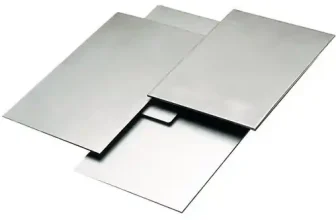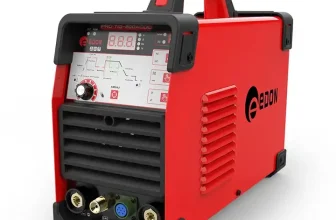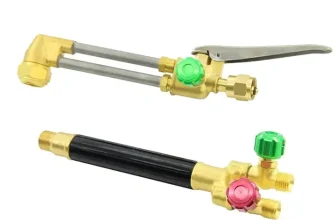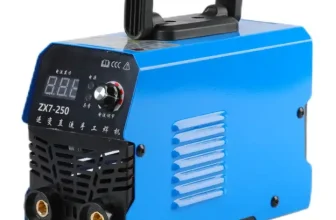A GTAW welder, or Gas Tungsten Arc Welder, is a type of welding machine used in the process known as GTAW (Gas Tungsten Arc Welding). This welding method, also commonly referred to as Tungsten Inert Gas (TIG) welding, utilizes a non-consumable tungsten electrode to produce the weld. The tungsten electrode and the weld area are protected from atmospheric contamination by an inert shielding gas such as argon or helium. A filler material is typically used, though in certain applications, autogenous welds, which do not use filler material, can also be produced with GTAW. Because of this, GTAW welding is especially valued for its precision and high-quality finish, making it suitable for complex welding tasks.
Brief history of GTAW Welding
The inception of gas tungsten arc welding (GTAW), also known as tungsten inert gas (TIG) welding, can be traced back to the early 20th century. Originally developed for welding magnesium and aluminum in the aircraft industry during the 1930s and 1940s, GTAW revolutionized the manufacturing and repair of warplanes during World War II. This new welding process was due to the unique properties of these metals which could not be adequately welded using the traditional methods available during that time.
Russel Meredith of the Northrop Aircraft Company is credited with the development of the process we now refer to as GTAW. Meredith found that by using an electric arc between a non-consumable tungsten electrode and the workpiece, (with an inert shielding gas to protect the weld pool from atmospheric contamination), he could produce high quality, precision welds on a variety of metals. Post-war advancements in technology and metallurgy led to the widespread adoption and refinement of GTAW, turning it into an essential tool for many different industries. Today, this technique remains a preferred method for welding due to its versatility and precision.
Basics of Gas Tungsten Arc Welding (GTAW)
Overview of the welding process
Gas Tungsten Arc Welding (GTAW) also known as Tungsten Inert Gas (TIG) welding, is a welding process that utilizes a concentrated heat source in the form of a tungsten electrode, which generates an arc of electricity. This process accelerates in a focused area, commonly known as the “welding pool”, to melt the base metal to create a sturdy joint.
The whole welding process is done under the protection of an inert shielding gas, which aims at preventing oxidation and contamination from the surrounding environment. The most common gases used are helium, argon, or a mixture of both.
Unlike other welding techniques such as Metal Inert Gas (MIG) welding, the GTAW process does not consume the electrode during welding. Hence, the tungsten electrode needs to be sharpened regularly to provide a precise weld.
GTAW can function on two different modes: autogenous mode, where only the base metals are melted to form a weld, and filler mode, where a separate filler material is used to join the base metals. The filler material is manually inserted into the weld pool while maintaining the arc.
This welding process is most favorable for thinner metals and refined welding applications due to its low heat input and high precision control. It is also very versatile and can be used on a variety of metals including, but not limited to, carbon and stainless steel, aluminum, magnesium, copper-bronze, and nickel alloys.
Thus, the GTAW process offers a unique blend of control and versatility, making it an essential tool in various industries.
Materials used
Electrodes
Tungsten electrodes are the integral part of Gas Tungsten Arc Welding (GTAW). These electrodes are used to carry the welding current to the arc, and they also contribute by adding heat to increase the temperature of the welding zone. As the name suggests, tungsten electrodes are often made from pure tungsten or an alloy of tungsten.
Pure tungsten electrodes are known for their durability and longevity, thereby being suitable for AC welding of metals such as aluminum and magnesium. However, under the high heat of the GTAW process, pure tungsten forms a rounded ball at the tip, which can destabilize the arc and reduce the weld quality.
To cope with such issues, tungsten is often alloyed with other elements such as thorium, cerium, lanthanum, and zirconium to improve arc stability and electrode life. These alloys help to maintain a point on the electrode, which affords better arc control and allows for greater precision.
Choosing an appropriate electrode depends on several criteria, including the type of metal being welded, the welding current, and the desired weld characteristics. For example, ceriated (containing cerium) or lanthanated (containing lanthanum) electrodes are preferable for welding steel or stainless steel. Thoriated (containing thorium) electrodes, on the other hand, while providing excellent arc characteristics and longevity, pose a slight radiation hazard, thus requiring more careful handling and disposal.
Overall, the choice of electrodes in GTAW plays a crucial role in determining the quality of the weld, making it absolutely essential to understand their composition, characteristics, functionality, and safety requirements.
Shielding Gas
Shielding gas is an essential component of Gas Tungsten Arc Welding (GTAW). As the name suggests, this inert or semi-inert gas protects the weld and electrode from oxidation and other potential contamination from the surrounding environment as welding takes place.
Argon is often the shielding gas of choice in GTAW due to its heavy weight, which creates a blanket over the welding area. It delivers great arc stability and is perfect for thin materials. However, a blend of argon and other gases, like hydrogen or helium, might be employed in certain situations. Hydrogen increases heat input and aids faster welding rates while helium allows for deeper penetration and is often picked for welding thicker materials.
It’s key to note the choice of shielding gas can change the properties of the weld. Hence, selection often comes down to the specific metal, thickness of the material, and the desired weld characteristics. The appropriate choice of shielding gas plays a significant role in maximizing the overall quality of GTAW welding.
Types of currents used in GTAW
In the Gas Tungsten Arc Welding (GTAW) process, two different types of electrical currents are commonly used – Direct Current (DC) and Alternating Current (AC).
Direct Current (DC) is the most frequent type of current used in GTAW. In this current type, electrons flow in one continuous direction from the negative (-) to the positive (+) side. When using DC in GTAW, the tungsten electrode is generally the negative pole, targeted by the positive ions of the material being welded. This results in high penetration capacity and is predominantly used in the welding of stainless steel, copper alloys, nickel alloys, steel, and titanium.
On the other hand, Alternating Current (AC) is typically utilized when welding aluminum and magnesium, materials that rapidly form an insulating oxide layer that DC struggles to break through. Unlike DC’s unidirectional electron flow, AC alternates sixty times per second (60 Hz frequency in many countries) between positive and negative poles. This fluctuation allows the oxide layer to be cleared off during the electrode-positive phase, and the actual welding to occur during the electrode-negative phase.
Each type of current has its benefits and is used depending on the properties of the materials being joined. An understanding of these nuances is part of the essential knowledge of a skilled GTAW welder.
Importance of GTAW Welder
Benefits of using a GTAW Welder over other types
GTAW Welding has several benefits over other welding methods, making it a preferred choice in many applications. The first advantage is the superior quality weld. GTAW Welding produces cleaner and more precise welds with less splatter because it doesn’t use a consumable electrode. This makes it an excellent choice for critical applications where precision and aesthetics matter.
Another significant benefit is its versatility. With GTAW, a variety of metals and alloys can be welded, including but not limited to steel, stainless steel, aluminum, titanium, and copper. This makes it a valuable welding process across numerous industries.
Furthermore, GTAW welding is known for causing minimal damage to the surrounding material due to its concentrated heat source. This results in fine, neat welds and is especially beneficial when working with thin or delicate metals that can warp easily under excessive heat.
Lastly, GTAW Welding provides the welder with more control over the welding process. By using a foot pedal, the welder can rapidly adjust the arc’s heat during welding. This control allows for easy handling of complex and intricate welds.
This, combined with the high quality of welds and versatility in the type of materials that can be weld, makes GTAW welding an excellent choice over other types of welding methods. However, mastery over this method does require significant skills and training, but the results are usually worth the effort.
Industries where GTAW is commonly used
The versatility and precision of Gas Tungsten Arc Welding (GTAW) welding make it a popular choice across a breadth of industries. It is prominent within the Aerospace industry, where high-functioning, fail-safe components are essential. The precision and quality of GTAW make it ideal for crafting the aerospace parts that are often composed of aluminum and other non-ferrous metals.
In the Automotive sector, GTAW is preferred for manufacturing parts that require smooth and clean joins such as exhaust systems, or intricate parts including cooling systems. The process is also used in repair work, remodels, and custom jobs as it provides a level of function and aesthetics.
In the Maritime sector, GTAW is used in shipbuilding and repair to handle critical construction parts that demand a high level of integrity to withstand the harsh marine environment. This includes areas exposed to saline water that can lead to corrosion.
The Oil and Gas industry also leverages GTAW for crafting pipes and tubes that can endure high pressure and heat, typical of this sector’s operations. This welding technique ensures the strength and durability of these essential components.
Furthermore, it’s utilized to a great extent in the Construction industry for creating architectural metalwork, railings, staircases, and other structural elements. Its ability to provide clean and accurate welds even for complex designs adds value to the architectural aesthetics.
Lastly, in the Artistic realm, many metal artists use GTAW for their works due to its capability to weld a variety of metals and alloys successfully. It provides artists with higher control for more detailed and intricate designs.
Specific applications of GTAW Welding
Gas Tungsten Arc Welding (GTAW) has found specific applications across various industries due to its ability to produce high quality, clean welds. These applications include both repair work and fabrication.
In the aviation industry, GTAW is extensively used due to its precision and the high-quality welds it produces. The construction of crucial aircraft components, such as engine parts and airframes, frequently employ this technique. It’s also used in rocket engines due to the material’s inherent high heat resistance. The aerospace sector prefers this method because it reduces the risk of weld contamination that can lead to component failures.
In the automotive industry, GTAW has a significant role, especially in high-performance vehicles, where strong and durable welds are imperative. The process is often used to weld stainless steel and aluminum components, including custom exhausts, cylinder heads, and other engine parts.
In addition, GTAW is instrumental in the manufacturing and maintenance of pipelines in the oil and gas industry. It is ideal for welding pipes because it can handle a variety of materials, thicknesses, and designs, adapting to the specific requirements of different projects.
Finally, GTAW is widely used in the arts and crafts sector due to its high level of control and versatility. Artists who work with metal often prefer this welding process as it allows them to create intricate designs with a high level of precision. This makes GTAW an ideal choice for metal sculptors and jewelers.
Thus, in various ways, GTAW proves to be a valuable welding technique with wide-ranging applications across multiple industries.
How to Operate a GTAW Welder
Necessary safety procedures
Before operating a GTAW Welder, it’s crucial to prioritize safety to prevent accidents and injuries. The first step is to wear appropriate protective gear throughout the welding process. This can include a fire-resistant jacket or apron, handsomely designed welding helmets with a special shielding to protect the eyes from ultraviolet and infrared rays, and heavy-duty gloves to protect from burns or electrical shock.
Work in a well-ventilated area to avoid inhaling detrimental welding fumes. If welding in a confined space, ensure to use an approved air-supplied respirator. Furthermore, remove any flammable materials around your workspace to prevent them from igniting due to sparks or hot metal.
It’s equally important to understand the correct body positioning. You should maintain a safe distance from the arc and never touch the electrode or metal parts of the welder with bare skin during operation as this can cause severe burns or electrical shock.
Always shut down the machine properly after use, allowing the welder and metal to cool down before touching. Lastly, having a fire extinguisher nearby is essential in case of a fire outbreak during the process.
These safety measures, while seeming basic, are the foundation of safe welding practices and can help protect you from common welding hazards.
Step-by-step guide on how to use a GTAW Welder
First, make sure your workspace is safe. This includes ensuring there are no flammable materials in the immediate vicinity. Also, keep a fire extinguisher close by.
Second, equip yourself with the proper safety gear. Safety is paramount in welding and one needs to wear the right PPE. This includes a welding helmet to shield your eyes from intense light, flame resistant gloves to protect against heat, and safety boots to protect against falling objects and sparks.
Third, power on the GTAW welding machine. Understand the controls and how to adjust the heat intensity. Ensure you know how to control the amperage, balance control and post-flow times, as these settings are vital in making quality welds.
Fourth, clamp the electrode into the torch handle, making sure it protruded the desired amount and is secured firmly. Attach the ground close to the welding area to ensure a proper ground connection.
Fifth, prepare the metal you are going to weld. Use a wire brush or grinder to clean the area which will be welded. It’s always critical to weld on clean metal, especially with GTAW welding which doesn’t handle impurities well.
Sixth, set a good body and torch position. Lean your body to the table and rest the base of your hand near the welding area. Your torch hand needs to be as steady as possible.
Seventh, start the arc and maintain a uniform gap between the electrode and base material. Beginners can start the arc by scratching the electrode against the base like a match stick.
Finally, lower your welding helmet and start welding along your marked path at a steady pace. Keep the filler rod at a 20 degree angle and dip it into the pool as you progress with the weld.
Remember, mastering GTAW welding requires a lot of practice and patience, so don’t get discouraged if your first few welds aren’t perfect.
Tips for best practices
To achieve the best results when using a GTAW Welder, it is essential to follow some expert-recommended practices:
-
Choose the Right Electrode: Depending on the type of metal being welded, select a suitable electrode. For example, a pure tungsten electrode is excellent for welding aluminum, while a thoriated tungsten electrode works well with steel.
-
Maintain the Right Arc Length: Ideally, the arc length should not be any longer than the diameter of your electrode. Extended arc lengths can lead to unstable arcs and poor weld quality.
-
Proper Gas Shielding: Ensure adequate gas flow to properly shield the weld area. Low gas flow can expose the weld to atmospheric contaminants, thereby reducing its strength and quality.
-
Cleanliness: Ensure that the material to be welded is clean and free from rust, oil, paint, or any other contaminants. The cleaner the material, the higher the quality of the weld.
-
Angle of Torch: Holding the torch at a 70 to 75-degree angle relative to the workpiece can result in a broader, flatter weld bead. It also allows the welder to maintain better control over the weld pool.
-
Correct Speed: Maintain a consistent, slow travel speed. Moving too fast can cause the weld to become thin and possibly create a lack of fusion.
-
Practice: Like any other skill, proficiency in GTAW welding comes with practice. Try maintaining a consistent arc, perfecting travel speed, and mastering an appropriate torch angle to improve performance over time.
Remember, these are just guidelines – each welding job may require personalized adjustments. However, following these essential tips can significantly enhance the success and overall finish of your GTAW welds.
Challenges Faced with GTAW Welding
Common issues and how to troubleshoot
Gas Tungsten Arc Welding (GTAW) is known for its precision and excellent results. Nevertheless, even skilled operators can find themselves faced with common challenges that tend to affect the quality of the weld. Fortunately, these are often manageable with a little know-how and experience.
One common issue is a wandering arc. This can be caused by an improperly shaped electrode. To correct this, ensure your electrode is ground with the correct point angle for your application and is free from contamination.
At times, you may also notice excessive weld penetration. This might be due to inappropriate welding parameters such as overly high amperage or inconsistent arc length. By ensuring proper welding settings and maintaining a steady hand during the welding process, one can prevent excessive penetration.
Susceptibility to contamination is another notable challenge with GTAW welding. Welds can be contaminated by various environmental factors and improper handling of the base metals. Pieces should be thoroughly cleaned and dried before being welded. Additionally, ensuring a proper shielding gas flow will help in protecting the weld pool from atmospheric contamination.
Weld cracking is another frequent problem faced by welders. This might be due to high levels of residual stress in the weld. Post-weld heat treatment (PWHT) can be an effective method to reduce residual stress and prevent cracking.
Lastly, difficulty in starting the arc is a common challenge. An aged or too thin tungsten electrode could be the cause. Regular inspection and necessary replacement of the electrode can help in avoiding such an issue.
Like with any trade, mastering GTAW welding comes with practice. Understanding and efficiently addressing these common issues can drastically improve your proficiency and the quality of your work. It also emphasizes the need for thorough training and ongoing education in this specific field of welding.
Limitations of GTAW Welding
Despite the several advantages of GTAW welding, it’s essential to acknowledge its limitations too. One of the most significant drawbacks is its overall complexity and the level of skill required to execute this process correctly. Welders need in-depth knowledge and a steady hand, especially when handling thin metals or delicate projects. Learning and mastering this technique requires patience and considerable practice, which often leads to higher labor costs.
GTAW welding is considerably slower than other welding processes, which could be a significant drawback when high production speed is required. It’s particularly time-consuming when dealing with thicker materials, as this type of welding is primarily designed for thin to medium-thickness metals. This slow process results in operational inefficiency in some cases, hence is not the most feasible option when dealing with larger sheets of metal or for mass production.
Another limitation is the cost involved. The equipment for GTAW welding, such as the tungsten electrodes and shielding gas, is relatively more expensive than those used in other types of welding. This high cost may not be economical for small scale operations or hobbyist welders.
Lastly, the process can be cumbersome when it comes to making overhead or out-of-position welds. The use of inert equipment coupled with the greater level of skill required makes this a challenging task.
In closing, while GTAW welding offers a high level of precision and greater control, it is not without its drawbacks. Understanding these limitations is necessary to make an informed choice and determine whether this method fits a particular welding requirement.
Conclusion
Recap of what a GTAW Welder is and its importance
With the ability to produce precise and high-quality welds in a wide range of materials, the GTAW (Gas Tungsten Arc Welding) Welder has cemented its place in multiple industries. Essentially, GTAW is a method of welding that uses a tungsten electrode and an inert shielding gas to protect the weld area from atmospheric contamination. Because of its flexibility and control, it is employed in sectors where precision is paramount, including the aerospace and automotive industries, or in artistic metalwork and jewelry. It presents a complex yet rewarding area to explore and master, undeniably playing a crucial role in welding technology. Though it comes with its own set of challenges, the benefits far outweigh the hurdles, making it an indispensable tool in modern fabrication.
Encouragement for further learning and exploration in the field of welding
Naturally, mastering the art of GTAW welding can take time and practice, but the rewards are well worth the effort. Fully understanding this skill opens up a wealth of opportunities, not only in varied industries, but also in personal projects.
Learning more about this form of welding and mastering it can significantly enhance your career trajectory, especially considering the high demand for skilled GTAW welders. Seek out courses, tutorials, and mentorships that can help refine your skills further.
Additionally, staying updated on the latest advancements in this field, exploring different materials and methods, and constantly practicing will make you more efficient and versatile. Be open to continuously learning and adapting – innovation in welding techniques can open up many exciting paths.
Remember, as with any craft, curiosity and a passion to learn are the catalysts for growth and success. In the journey of becoming a more proficient welder, patience is an asset. Keep the spark of curiosity alive and let the fascinating world of welding guide your path. Whether you choose to dive deeper into GTAW welding or explore other types, one thing is certain – the field of welding holds unlimited possibilities for those who are willing to venture!







